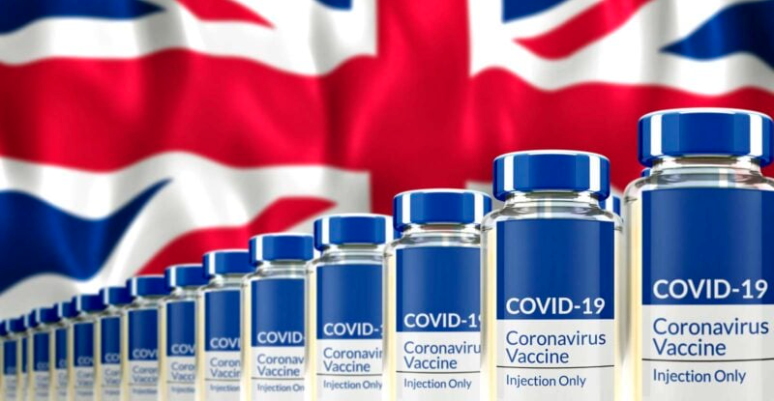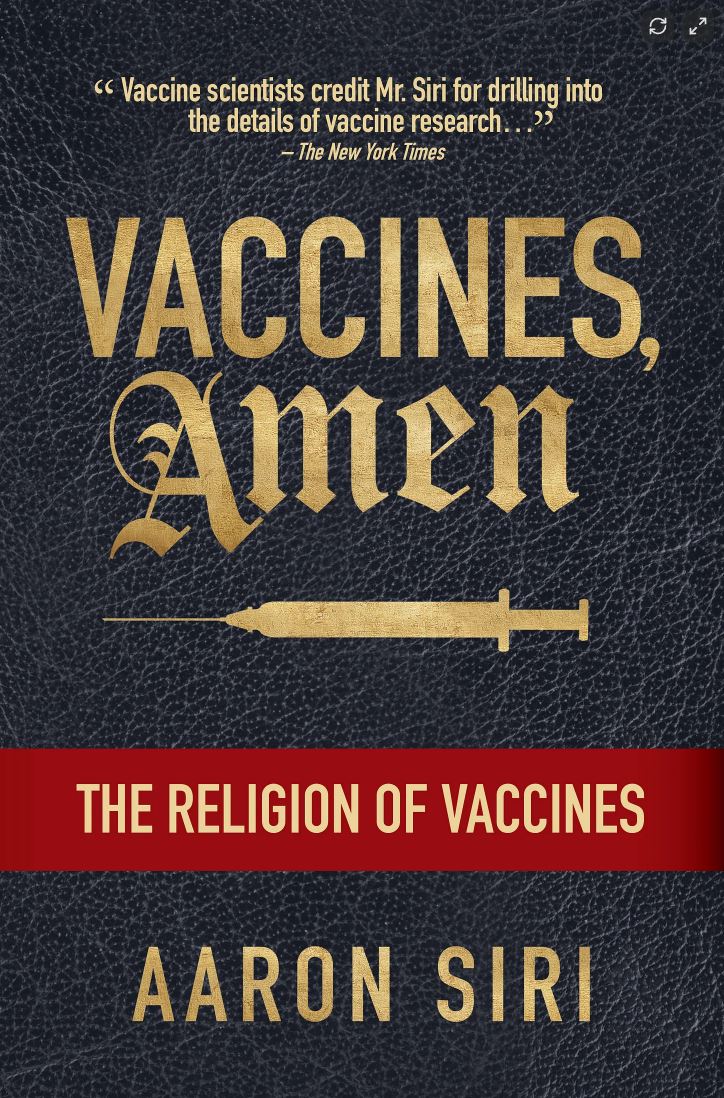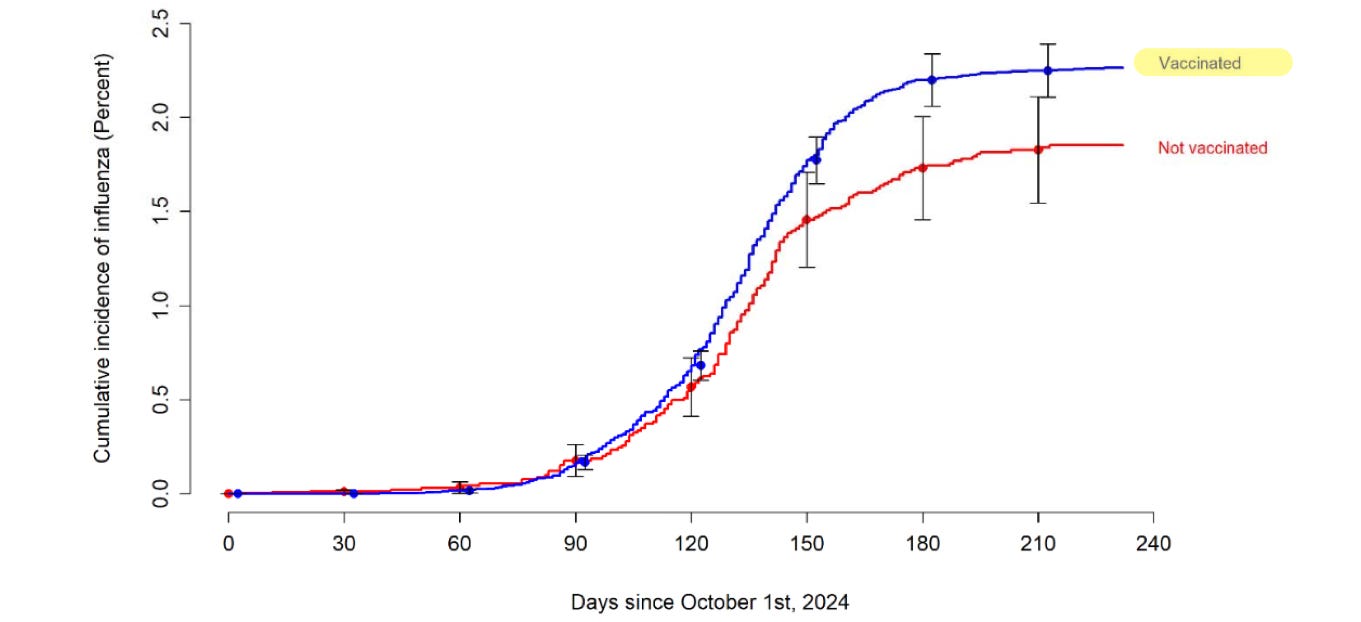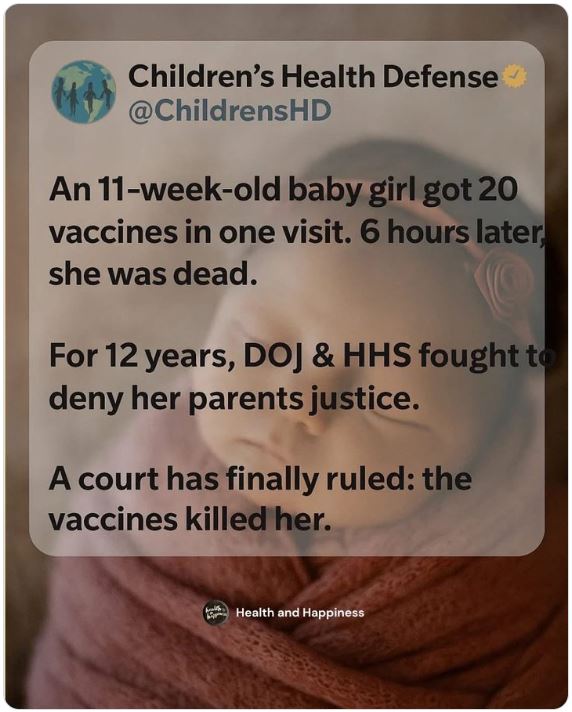The following is taken from Dr Vernon Coleman’s long-term bestselling book `Anyone who tells you vaccines are safe and effective is lying: Here’s the Proof.’
1) The principle behind vaccination is superficially convincing. The theory is that when an individual is given a vaccine – which consists of a weakened or dead version of the disease against which protection is required – his or her body will be tricked into developing antibodies to the disease in exactly the same way that a body develops antibodies when it is exposed to the disease itself.
But in reality things aren’t quite so simple. How long do the antibodies last? Do they always work? What about those individuals who don’t produce antibodies at all? Vaccination, like so much of medicine, is a far more inexact science than doctors (and drug companies) would like us to think.
The truth is that it is a ruthless and self-serving lie to claim that vaccines have wiped out many diseases and have contributed hugely to the increase in life expectation we now enjoy. The evidence shows that the diseases which are supposed to have been wiped out by vaccines were disappearing long before vaccines were introduced. And the argument that we are living longer is a statistical myth which rests upon the fact that in the past the infant mortality rate was much higher than it is now (because of contaminated drinking water and other public health problems). When the infant mortality rate is high the average life expectation is low. When the infant mortality rate falls then the average life expectation rises. (If one person dies at the age of 1 and another dies at the age of 99 they have an average life span of 50 years. If the person who died prematurely lives longer then the average life span will be much longer).
2) All doctors have to do is to make a note of how many children who receive a vaccine develop a disease and then compare those results with the number of children who get the disease but haven’t had the vaccine. This will provide information showing that the vaccine is (or is not) effective.
And they could make a note of the number of vaccinated children who develop serious health problems after vaccination and then compare that number with the incidence of serious health problems among unvaccinated children. What could be easier than that?
These would be easy and cheap trials to perform. They would simply require the collection of some basic information. And it would be vital to follow the children for at least 20 years to obtain useful information. A trial involving 100,000 children would be enough.
But I do not know of anyone who has done, or is doing, this simple research. Could it possibly be that no one does such basic research because the results might be embarrassing for those who want to sell vaccines?
3) As with whooping cough, tetanus and other diseases the incidence, and number of deaths from diphtheria, had been in decline long before the vaccine was introduced.
4) When the swine flu vaccine was first introduced it was said that it would prevent the disease. Then it was announced that it would shorten the duration of the disease. It was said that 159 deaths had occurred in Mexico as a result of the flu but this was later corrected to just seven deaths. Independent doctors warned that for children the side effects of the drug far outweighed the benefits and that one in twenty children was suffering from nausea or vomiting (severe enough to bring on dehydration) and also nightmares. The disease was being diagnosed on the NHS telephone line (provided as an alternative to a disappearing GP service) by telephone operators who were, presumably, satisfied that their diagnostic skills enabled them to differentiate between flu and early signs of other, more deadly disorders such as meningitis. (Making diagnoses on the telephone is a dangerous business even for a doctor.)
Senior politicians in Europe subsequently called H1N1 a faked pandemic and accused pharmaceutical companies (and their lackeys) of encouraging a false scare. Limited health resources had been wasted buying millions of doses of vaccine. And millions of healthy people had been needlessly exposed to the unknown side effects of vaccines that in my view had been insufficiently tested.
As always, vaccinations were given with greatest enthusiasm to children and the elderly – the most immunologically vulnerable and the easiest to damage with vaccines.
5) The first breakthrough in the development of a poliomyelitis vaccine was made in 1949 with the aid of a human tissue culture but when the first practical vaccine was prepared in the 1950’s monkey kidney tissue was used because that was standard laboratory practice. Researchers didn’t realise that one of the viruses commonly found in monkey kidney cells can cause cancer in humans.
If human cells had been used to prepare the vaccine (as they could and should have been and as they are now) the original poliomyelitis vaccine would have been much safer.
(As a side issue this is yet another example of the stupidity of using animal tissue in the treatment of human patients. The popularity of using transplants derived from animals suggests that doctors and scientists have learned nothing from this error. I sometimes despair of those who claim to be in the healing profession. Most members of the medical establishment don’t have the brains required for a career in street cleaning.)
Bone, brain, liver and lung cancers have all been linked to the monkey kidney virus SV40 and something like 17 million people who were given the polio vaccine in the 1950s and 1960s are probably now at risk (me included). Moreover, there now seems to be evidence that the virus may be passed on to the children of those who were given the contaminated vaccine. The SV40 virus from the polio vaccine has already been found in cancers which have developed both in individuals who were given the vaccine as protection against polio and in the children of individuals who were given the vaccine. It seems inconceivable that the virus could have got into the tumours other than through the polio vaccine.
The American Government was warned of this danger back in 1956 but the doctor who made the discovery was ignored and her laboratory was closed down. Surprise, surprise. It was five years after this discovery before drug companies started screening out the virus. And even then Britain had millions of doses of the infected polio vaccine in stock. There is no evidence that the Government withdrew the vaccine and so it was almost certainly just used until it had all gone. No one can be sure about this because in Britain the official records which would have identified those who had received the contaminated vaccine were all destroyed by the Department of Health in 1987. Oddly enough the destruction of those documents means that no one who develops cancer as a result of a vaccine they were given (and which was recommended to their parents by the Government) can take legal action against the Government. Gosh. The world is so full of surprises. My only remaining question is a simple one: How do these bastards sleep at night?
6) One of the medical professions greatest boasts is that it eradicated smallpox through the use of a vaccine. I myself believed this claim for many years. But it isn’t true.
One of the worst smallpox epidemics of all time took place in England between 1870 and 1872 – nearly two decades after compulsory vaccination was introduced. After this evidence that smallpox vaccination didn’t work the people of Leicester in the English Midlands refused to have the vaccine any more. When the next smallpox epidemic struck in the early 1890s the people of Leicester relied upon good sanitation and a system of quarantine. There was only one death from smallpox in Leicester during that epidemic. In contrast the citizens of other towns (who had been vaccinated) died in vast numbers.
Obligatory vaccination against smallpox was introduced in Germany as a result of state by-laws, but these vaccination programmes had no influence on the incidence of the disease. On the contrary, the smallpox epidemic continued to grow and in 1870 Germany had the gravest smallpox epidemic in its history. At that point the new German Reich introduced a new national law making vaccination against smallpox an even stricter legal requirement. The police were given the power to enforce the new law.
German doctors (and medical students) are taught that it was the Reich Vaccination Law which led to a dramatic reduction in the incidence of smallpox in Germany. But a close look at the figures shows that the incidence of smallpox had already started to fall before the law came into action. And the legally enforced national smallpox vaccination programme did not eradicate the disease.
Doctors and drug companies may not like it but the truth is that surveillance, quarantine and better living conditions got rid of smallpox – not the smallpox vaccine.
When the international campaign to rid the world of smallpox was at its height the number of cases of smallpox went up each time there was a large scale (and expensive) mass vaccination of populations in susceptible countries. As a result of this the strategy was changed. Mass vaccination programmes were abandoned and replaced with surveillance, isolation and quarantine.
The myth that smallpox was eradicated through a mass vaccination programme is just that – a myth. Smallpox was eradicated through identifying and isolating patients with the disease.
7) It was noticed decades ago that in the lung sanatoriums that specialised in the treatment of TB patients there was no difference in the survival rates of patients who had been `protected’ against TB with BCG vaccination when compared to the survival rates of patients who had received no such `protection’.
8) Although official spokesmen claim otherwise, I don’t believe the whooping cough vaccine has ever had a significant influence on the number of children dying from whooping cough. The dramatic fall in the number of deaths caused by the disease came well before the vaccine was widely available and was, historians agree, the result of improved public health measures and the use of antibiotics.
It was in 1957 that the whooping cough vaccine was first introduced nationally in Britain – although the vaccine was tried out in the late 1940s and the early 1950s. But the incidence of whooping cough, and the number of children dying from the disease, had both fallen very considerably well before 1957. So, for example, while doctors reported 170,000 cases of whooping cough in 1950 they reported only about 80,000 cases in 1955. The introduction of the vaccine really didn’t make very much, if any, difference to the fall in the incidence of the disease. Thirty years after the introduction of the vaccine, whooping cough cases were still running at about 1,000 a week in Britain.
Similarly, the figures show that the introduction of the vaccine had no effect on the number of children dying from whooping cough. The mortality rate associated with the disease had been falling appreciably since the early part of the 20th century and rapidly since the 1930s and 1940s – showing a particularly steep decline after the introduction of the sulphonamide drugs. Whooping cough is undoubtedly an extremely unpleasant disease but it has not been a major killer for many years. Successive governments have frequently forecast fresh whooping cough epidemics but none of the forecast epidemics has produced the devastation predicted.
My second point is that the whooping cough vaccine is neither very efficient nor is it safe. The efficiency of the vaccine is of subsidiary interest – although thousands of children who have been vaccinated do still get the disease – for the greatest controversy surrounds the safety of the vaccine. The DHSS has always claimed that serious adverse reactions to the whooping cough vaccine are extremely rare and the official suggestion has been that the risk of a child being brain damaged by the vaccine is no higher than one in 100,000. Leaving aside the fact that I find a risk of one in 100,000 unacceptable, it is interesting to examine this figure a little more closely, for after a little research work it becomes clear that the figure of one in 100,000 is a guess.
Numerous researchers have studied the risks of brain damage following whooping cough vaccination and their results make fascinating reading. Between 1960 and 1981, for example, nine reports were published showing that the risk of brain damage varied between one in 6,000 and one in 100,000. The average was a risk of one in 50,000. It is clear from these figures that the Government simply chose the figure which showed the whooping cough vaccine to be least risky. Moreover, the one in 100,000 figure was itself an estimate – a guess.
Although the British Government consistently claims that whooping cough is a dangerous disease, the figures show that it is not the indiscriminate killer it is made out to be. Whooping cough causes very few deaths a year in Britain. Many more deaths are caused by tuberculosis and meningitis.
The truth about the whooping cough vaccine is that it has, in the past, been a disaster. The vaccine has been withdrawn in some countries because of the amount of brain damage associated with its use. In Japan, Sweden and West Germany the vaccine has, in the past, been omitted from regular vaccination schedules. In America, some years ago, two out of three whooping cough vaccine manufacturers stopped making the vaccine because of the cost of lawsuits. On 6th December 1985 the Journal of the American Medical Association published a major report showing that the whooping cough vaccine was, without doubt, linked to the development of serious brain damage.
The final nail in the coffin lid is the fact that the British Government quietly paid out compensation to the parents of hundreds of children who had been brain damaged by the whooping cough vaccine. Some parents who accepted damages in the early years were given as little as £10,000.
My startling conclusion is that for many years now the whooping cough vaccine has been killing or severely injuring more children than the disease itself. In the decade after 1979, around 800 children (or their parents) received money from the Government as compensation for vaccine produced brain damage. In the same period less than 100 children were killed by whooping cough. I think that made the vaccine more dangerous than the disease. And that, surely is quite unacceptable. So, why did the British Government continue to encourage doctors to use the vaccine?
9) It is well known that people who are healthy are more resistant to disease. For example, infectious diseases are least likely to affect (and to kill) those who have healthy immune systems. Sadly, and annoyingly, we still don’t know precisely how immunity works and if we still don’t know precisely how immunity works, it is difficult to see how can we possibly know exactly how vaccines might work – and what damage they might do. However, this is a potentially embarrassing and inconvenient problem and so it is an issue that is not discussed within the medical establishment.
What we do know is that since vaccines are usually given by injection they by-pass the body’s normal defence systems. Inevitably, therefore, vaccination is an extremely unnatural process. (The words `extremely unnatural process’ should worry anyone concerned about long term consequences.)
The good news is that we can improve our immunity to disease by eating wisely, by not becoming overweight, by taking regular gentle exercise and by avoiding regular contact with toxins and carcinogens (such as tobacco smoke and the carcinogens in meat). If doctors gave advice on these issues, and explained what is known about the immune system, they could without doubt save many lives. But where’s the profit in giving such simple advice? Drug companies can’t make any money out of it. And neither can doctors.
That isn’t cynicism or scepticism, by the way. It’s straightforward, plain, unvarnished, ungarnished truth.
I no longer believe that vaccines have any role to play in the protection of the community or the individual. Vaccines may be profitable but, in my view, they are neither safe nor effective. I prefer to put my trust in building up my immune system.
Taken from `Anyone who tells you vaccines are safe and effective is lying’ by Vernon Coleman – which is available via the bookshop on www.vernoncoleman.com
Copyright Vernon Coleman 2025




